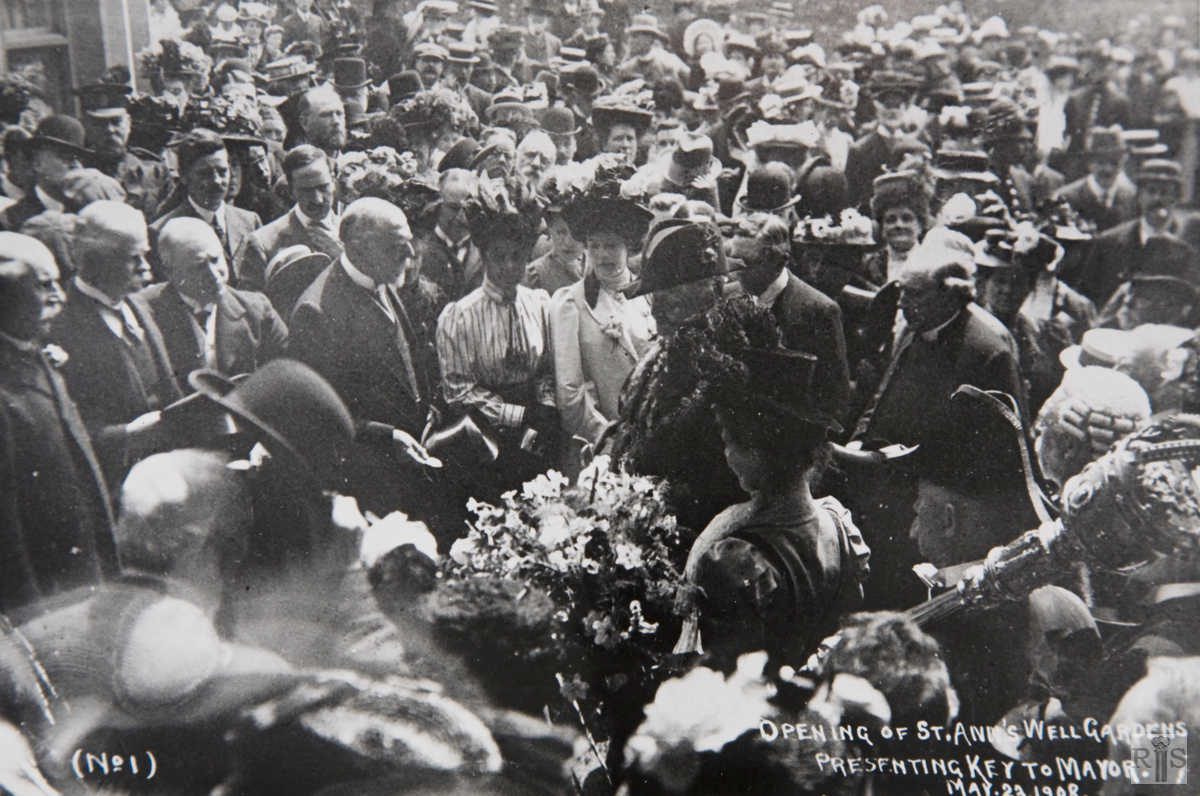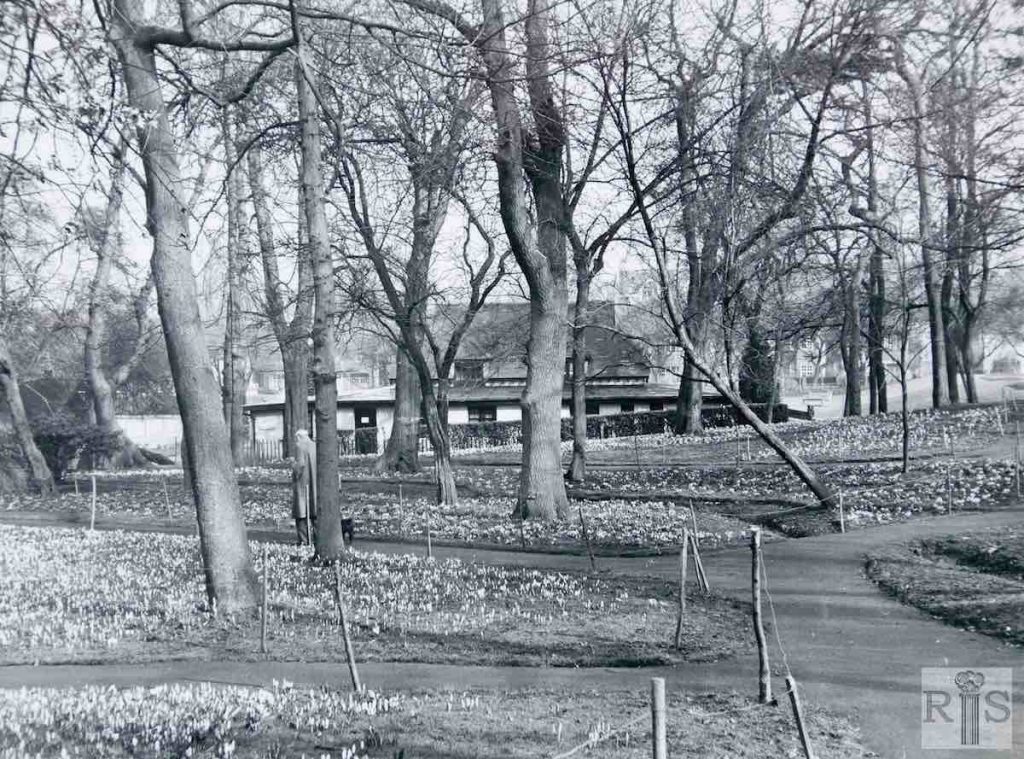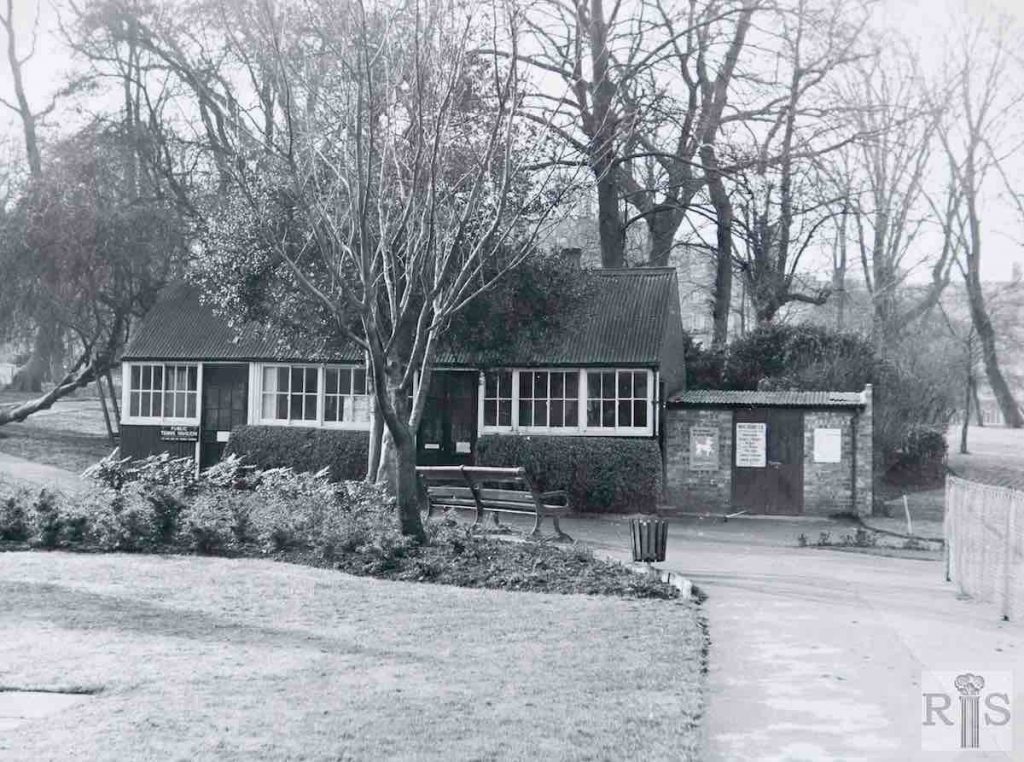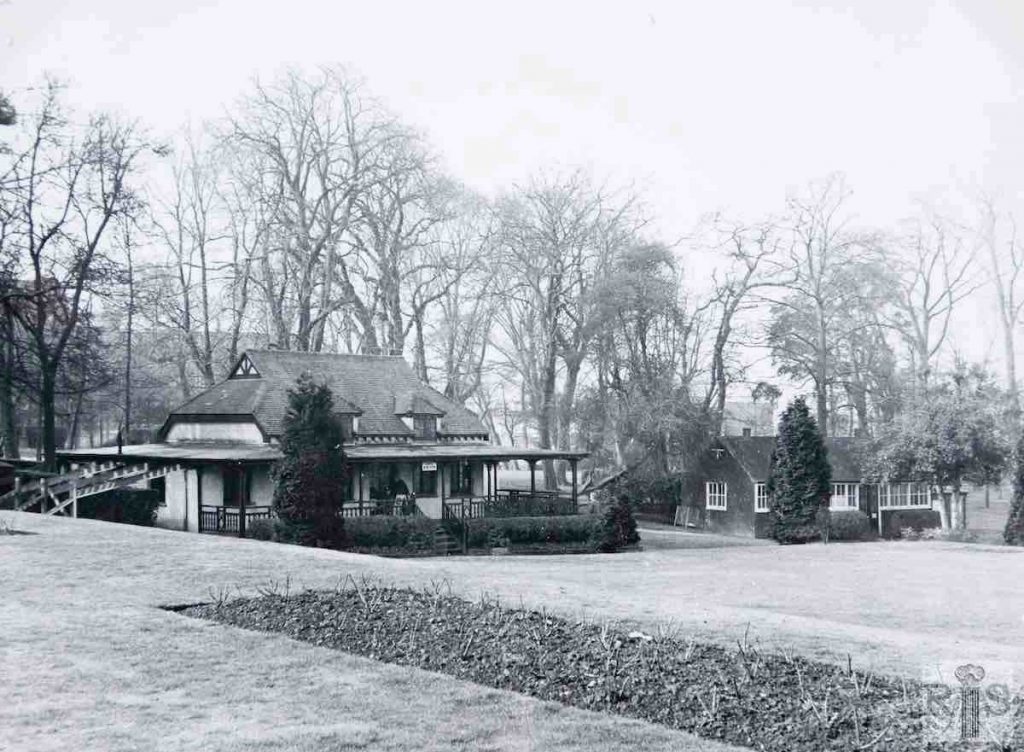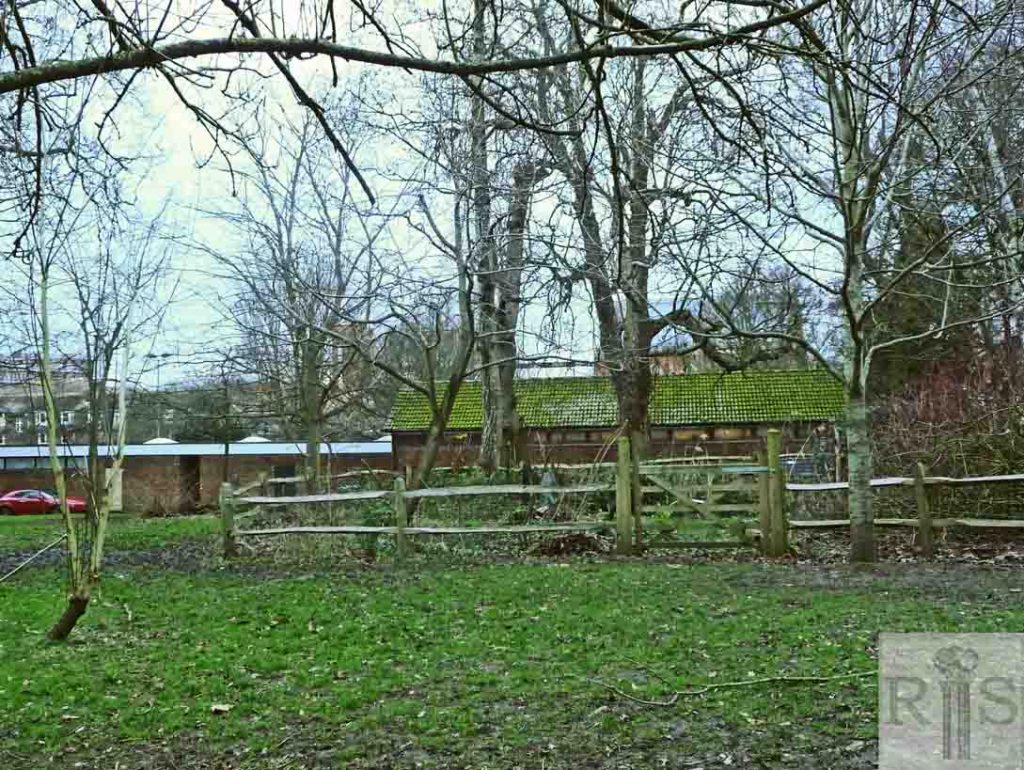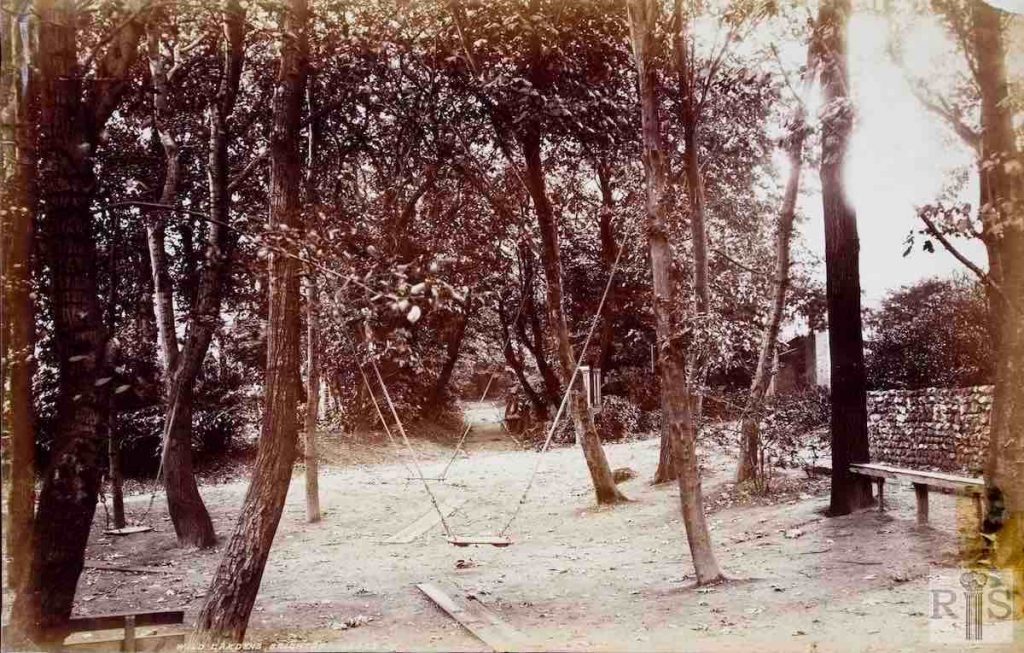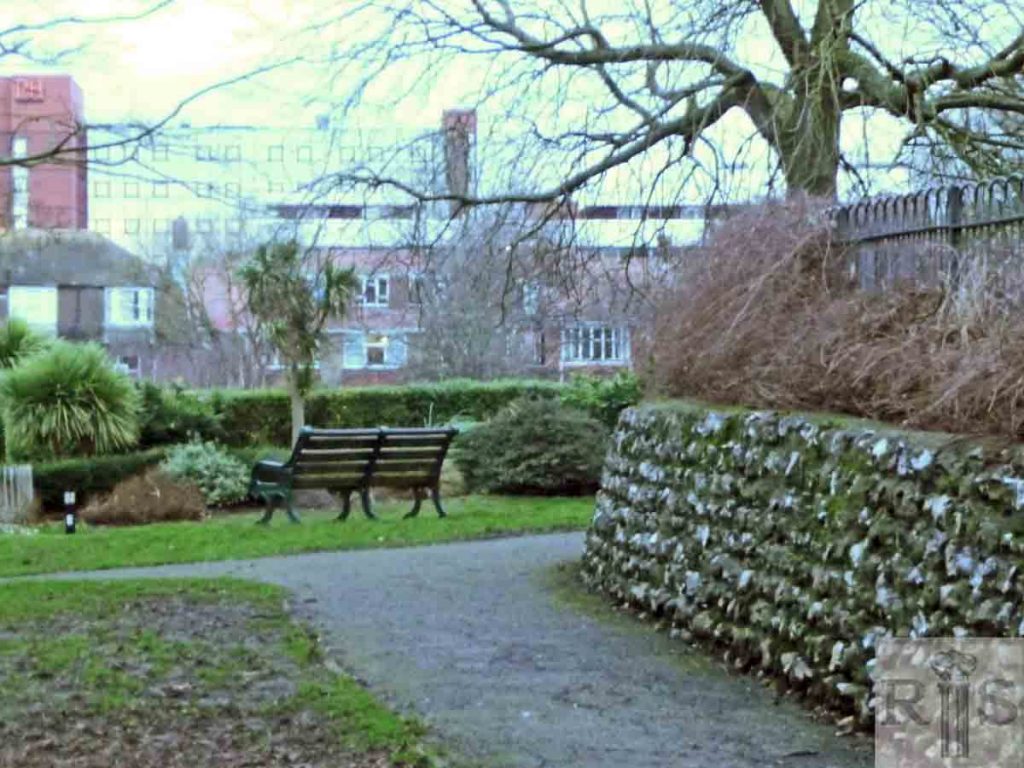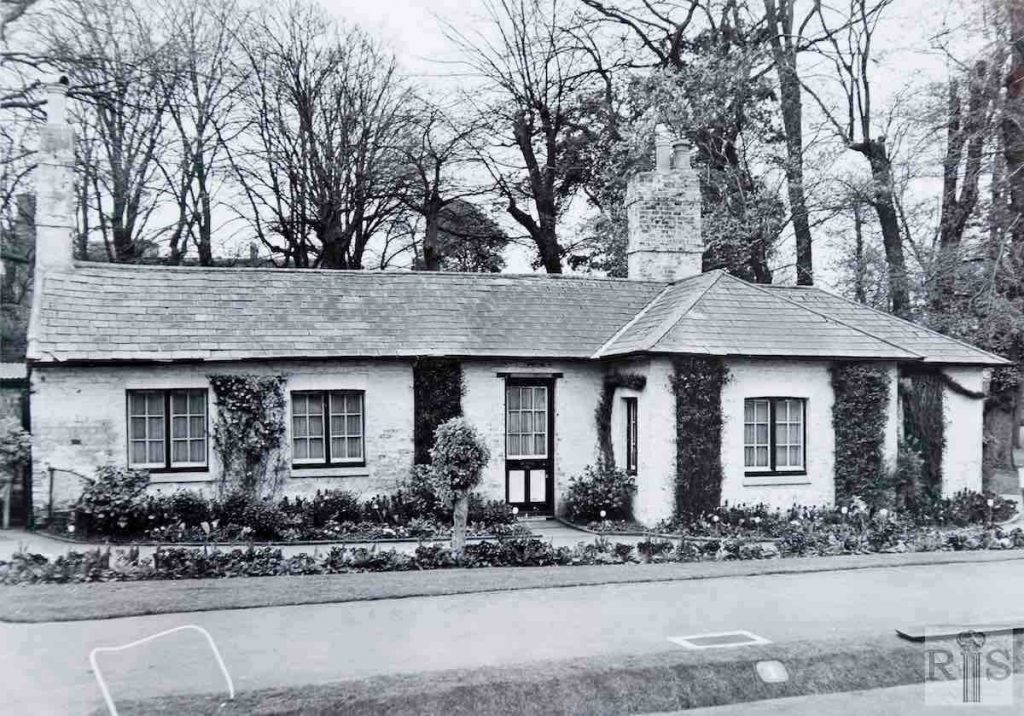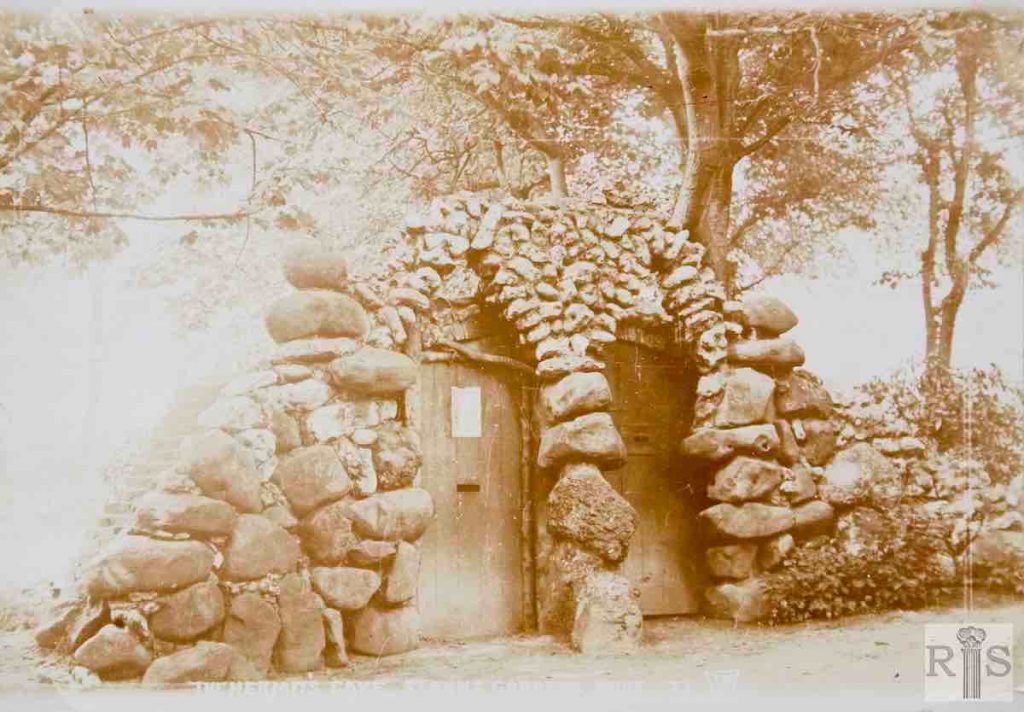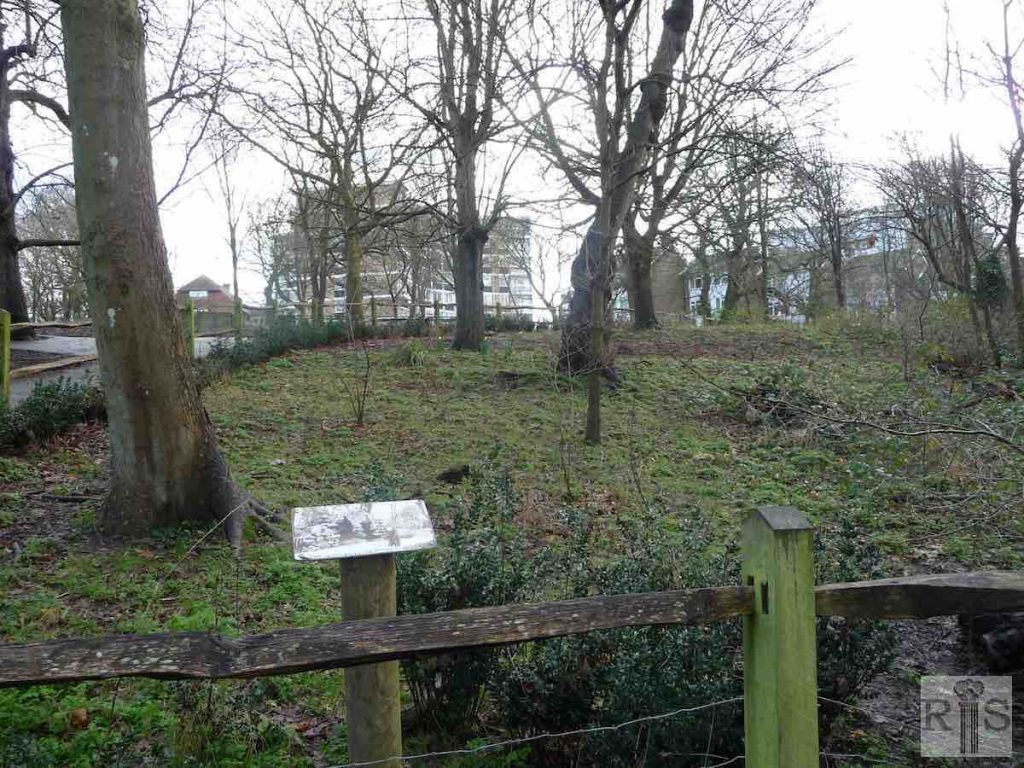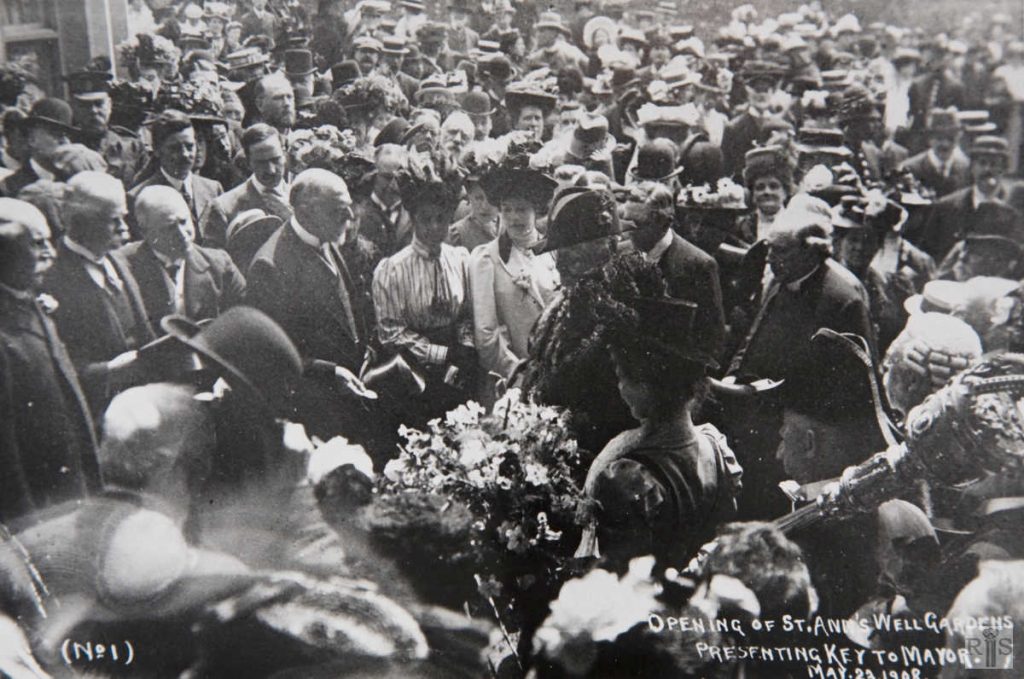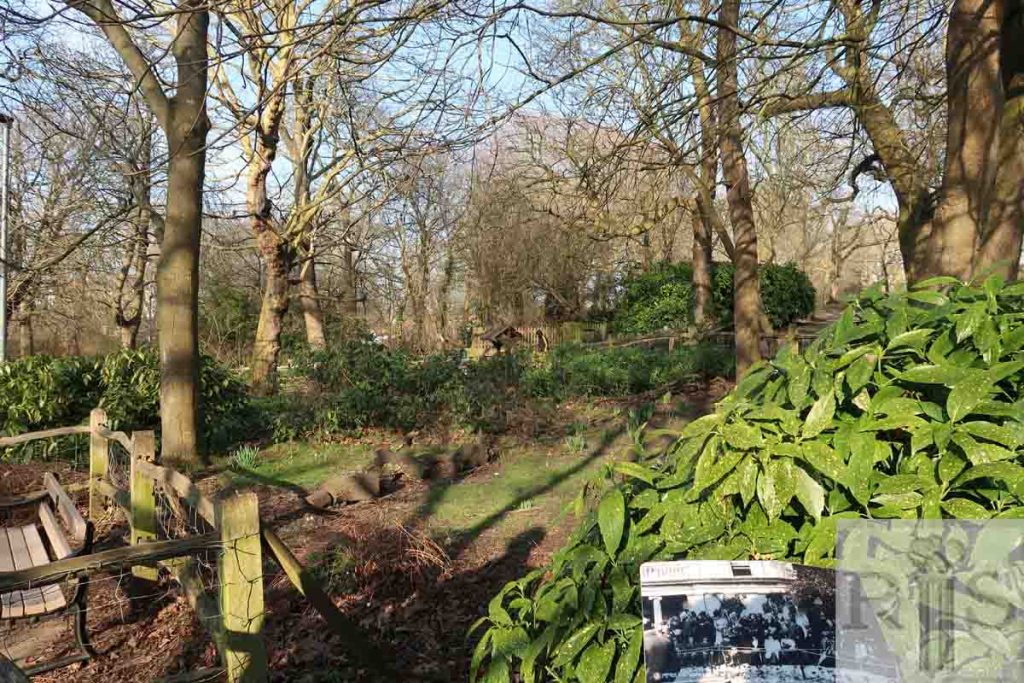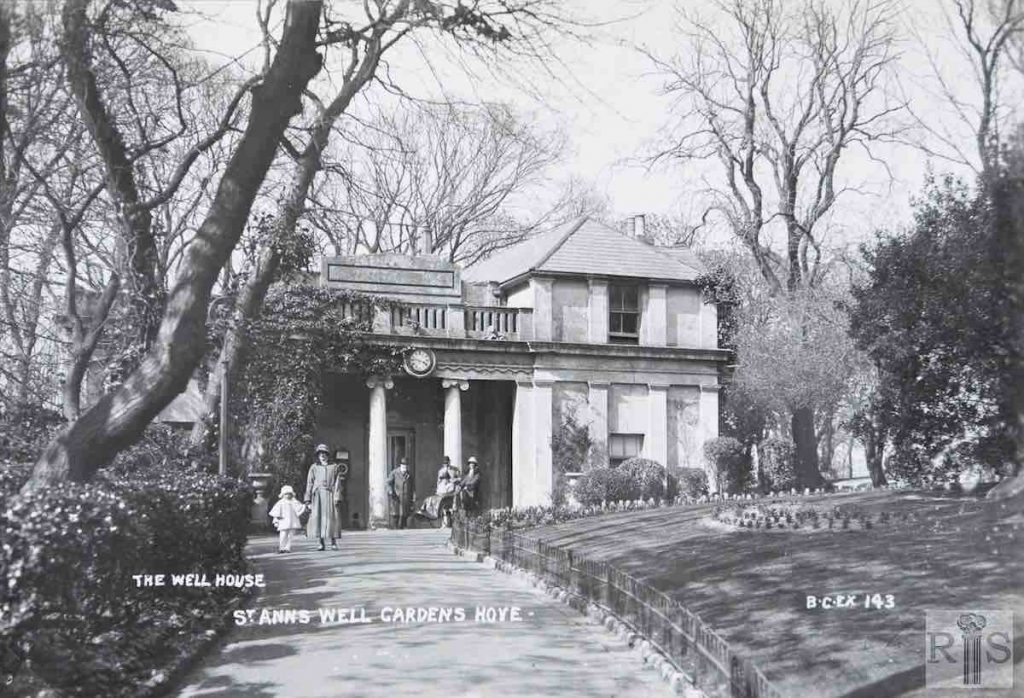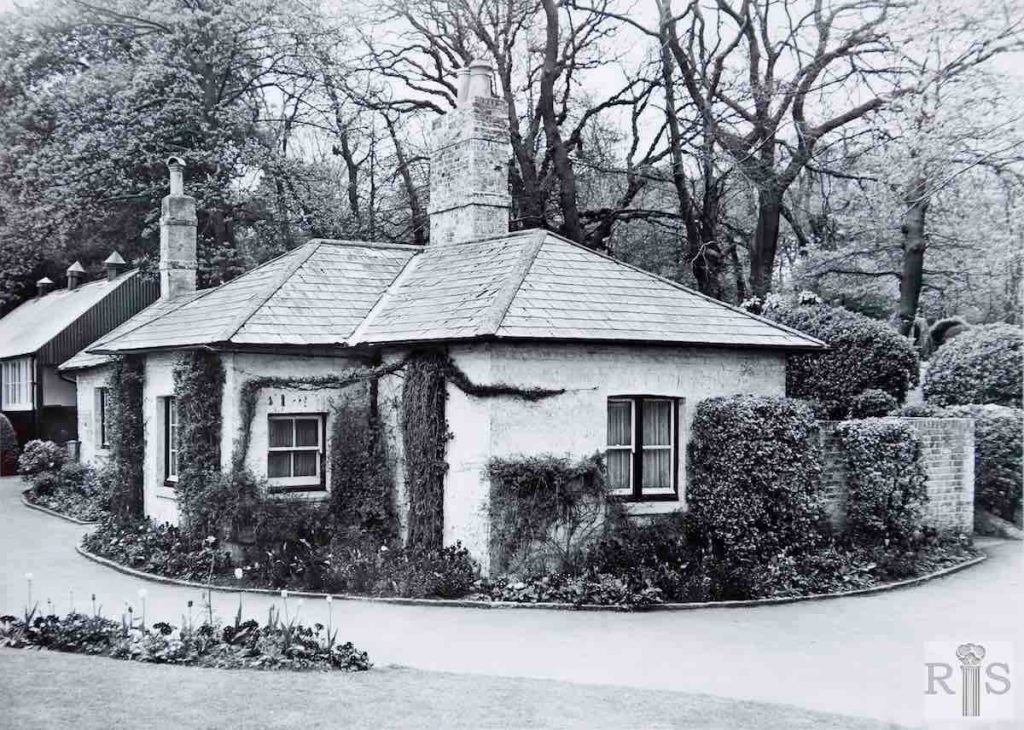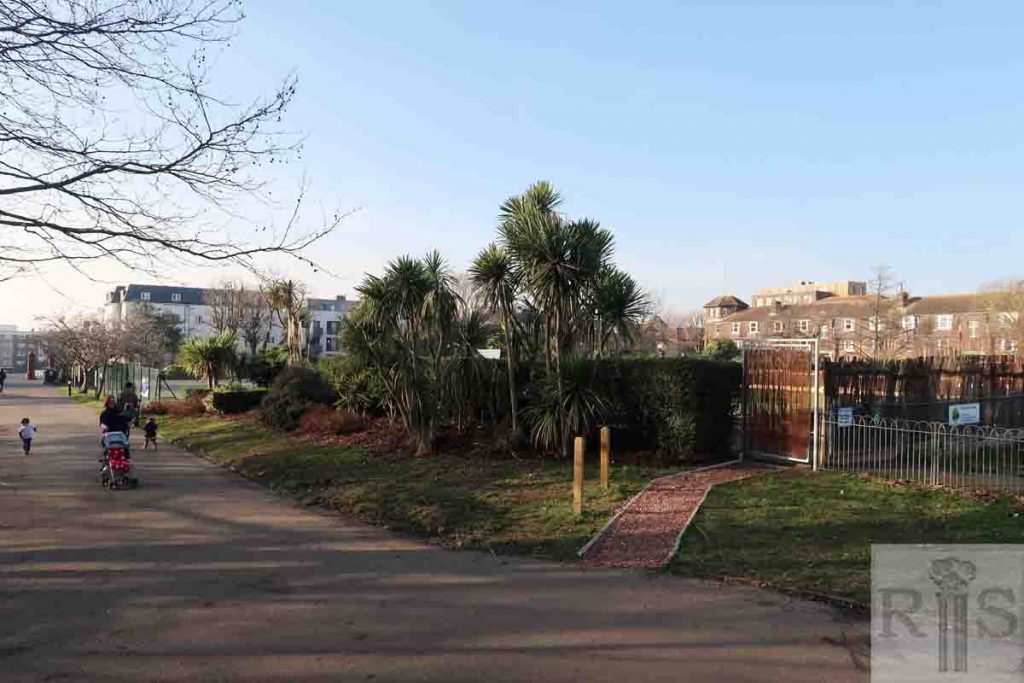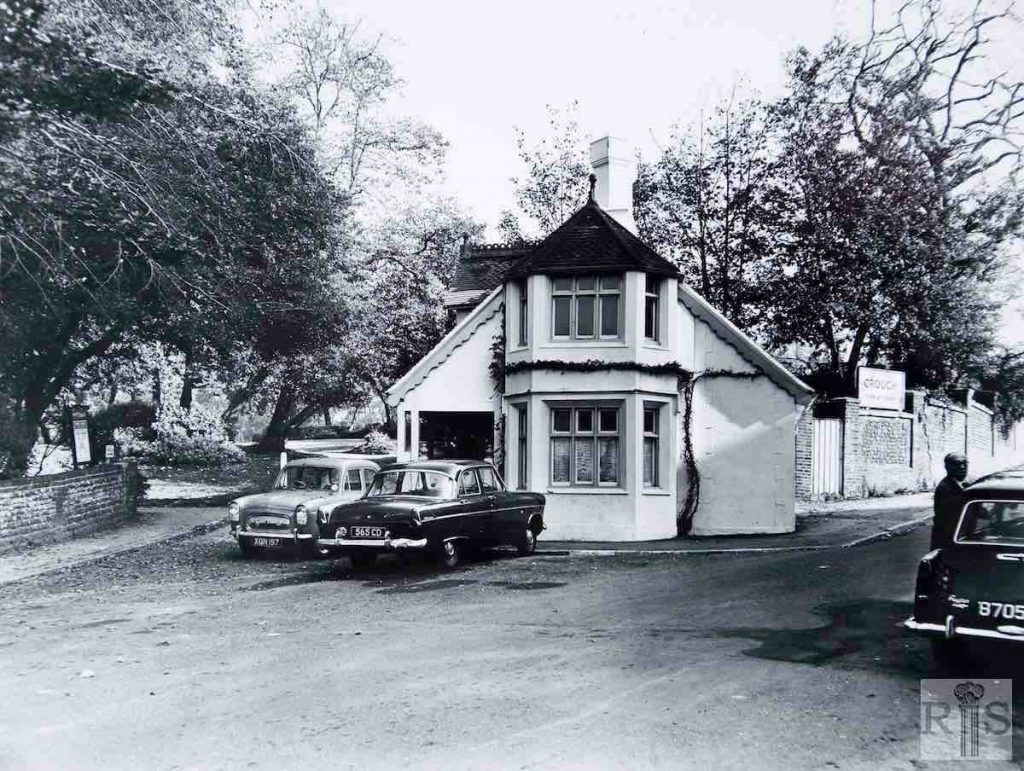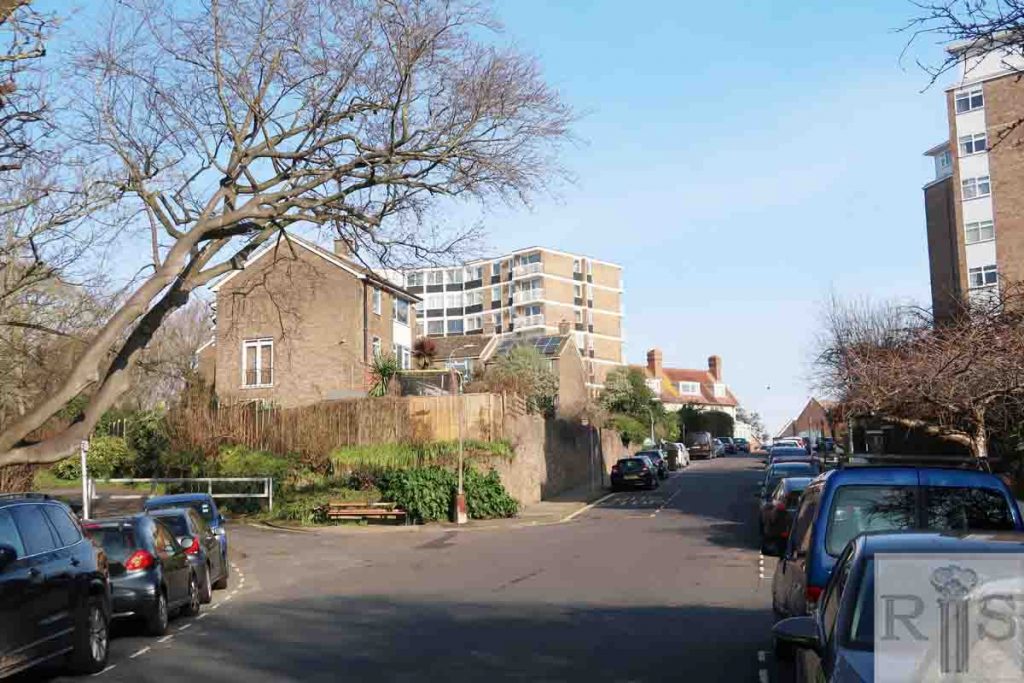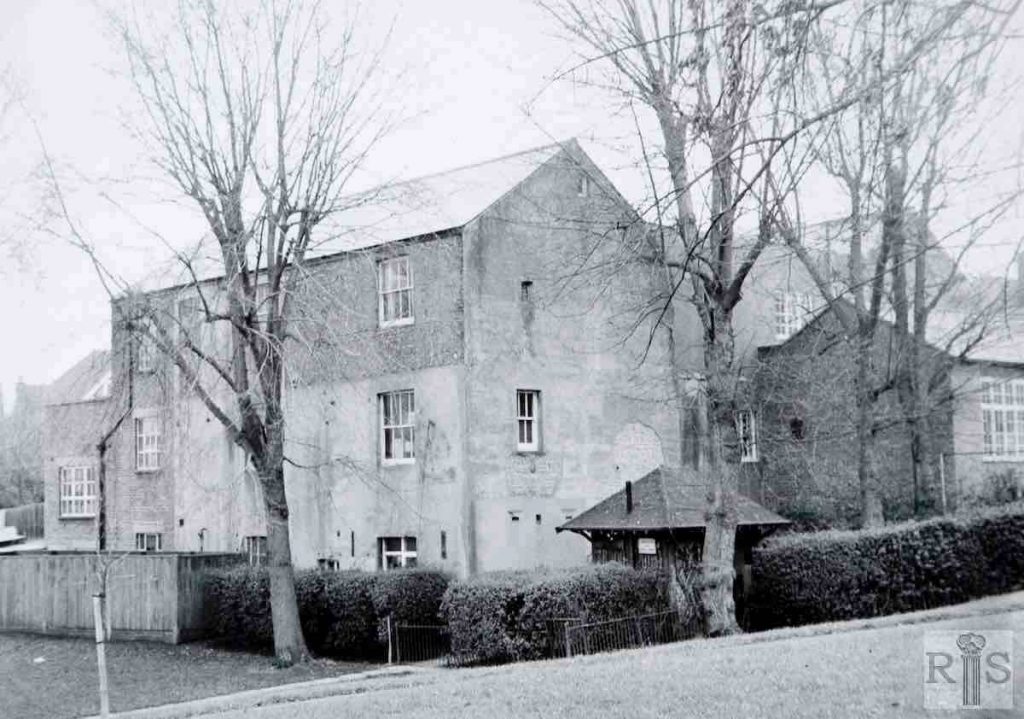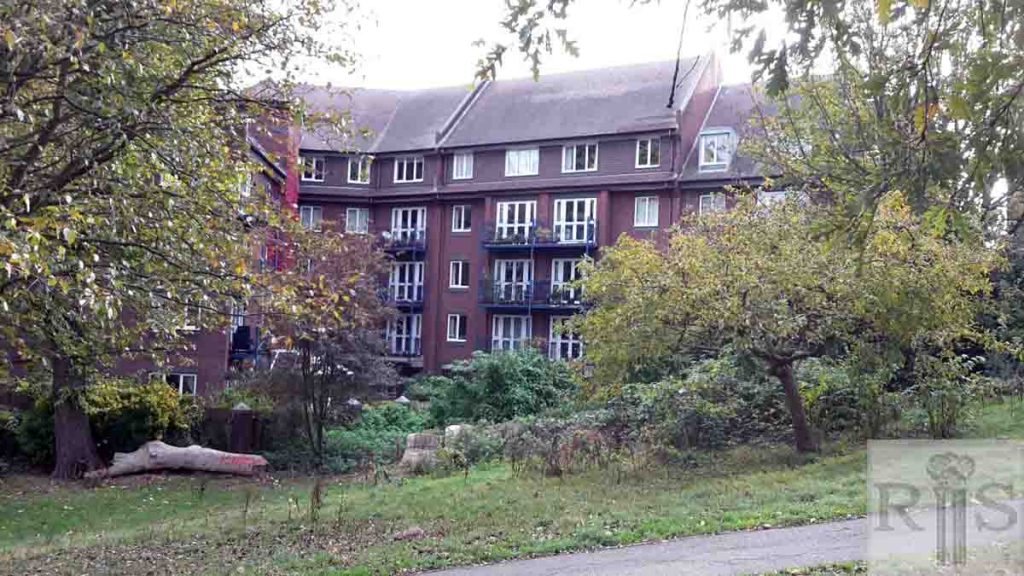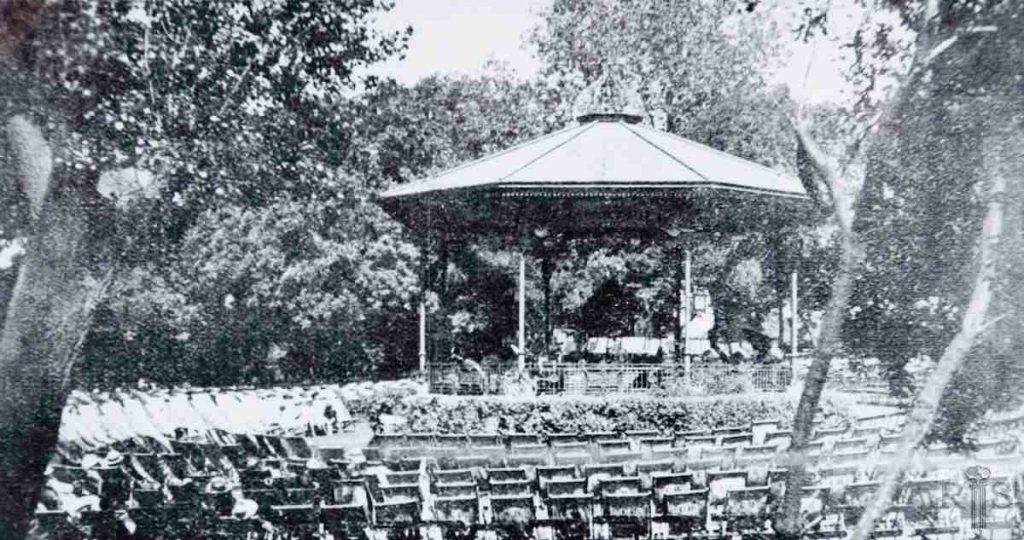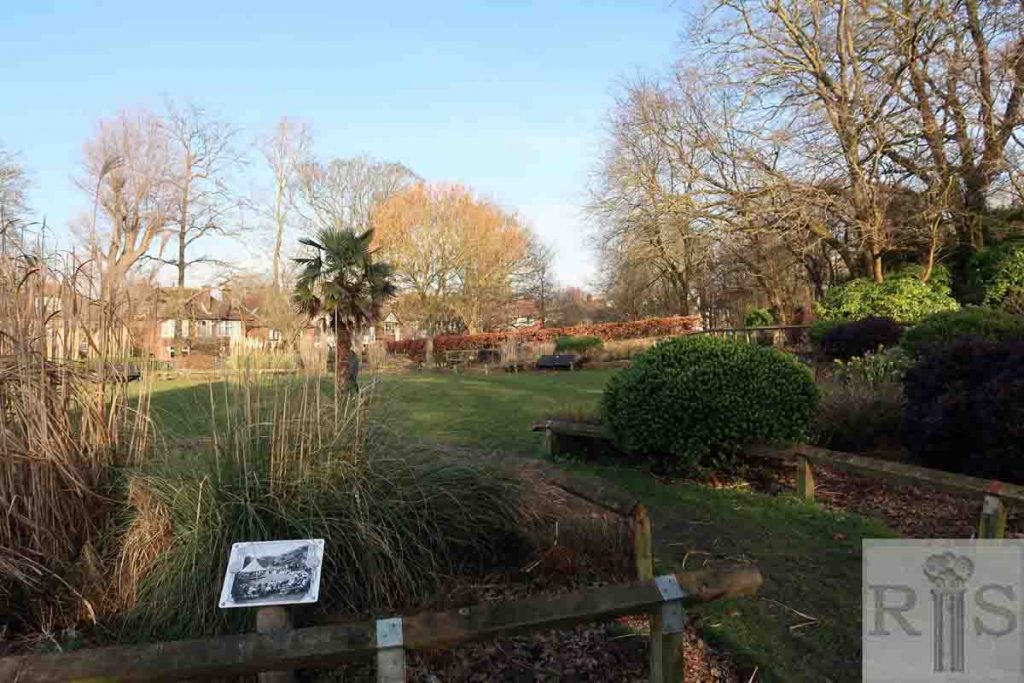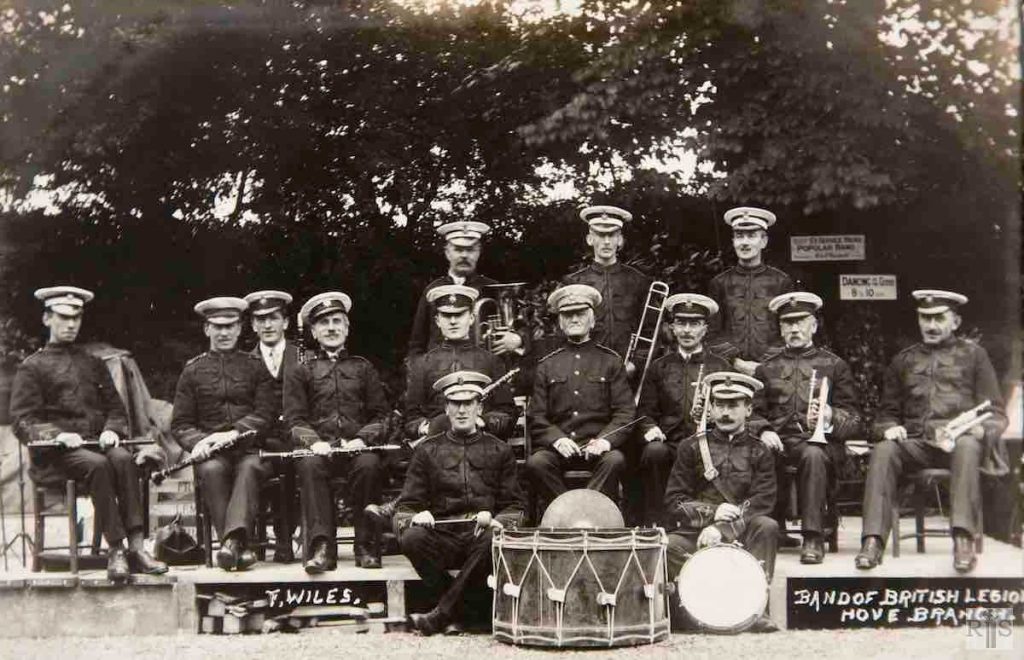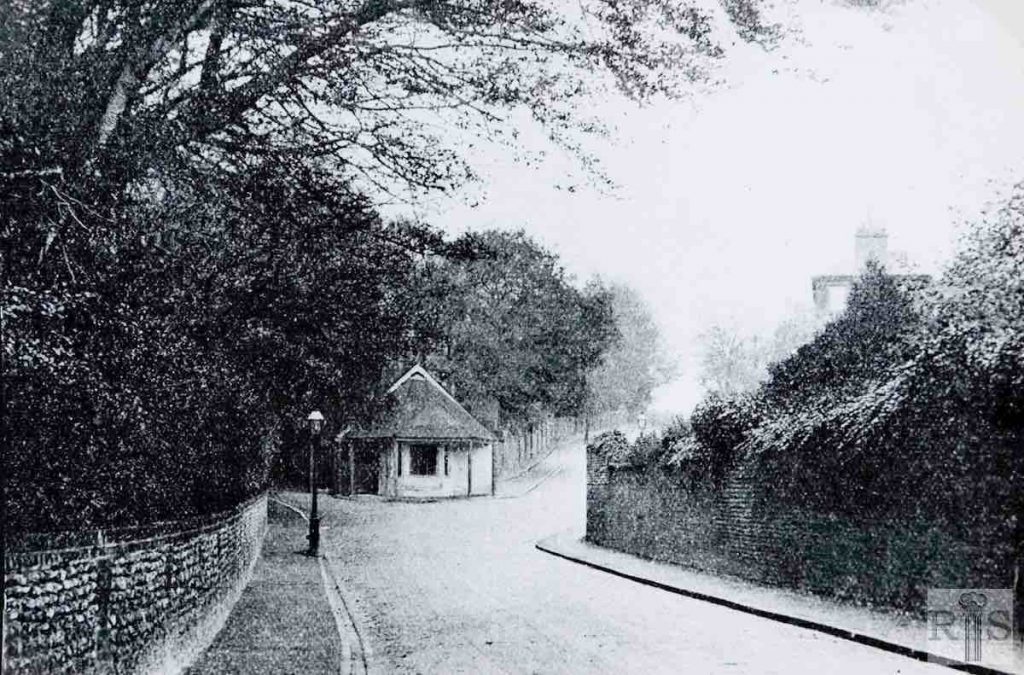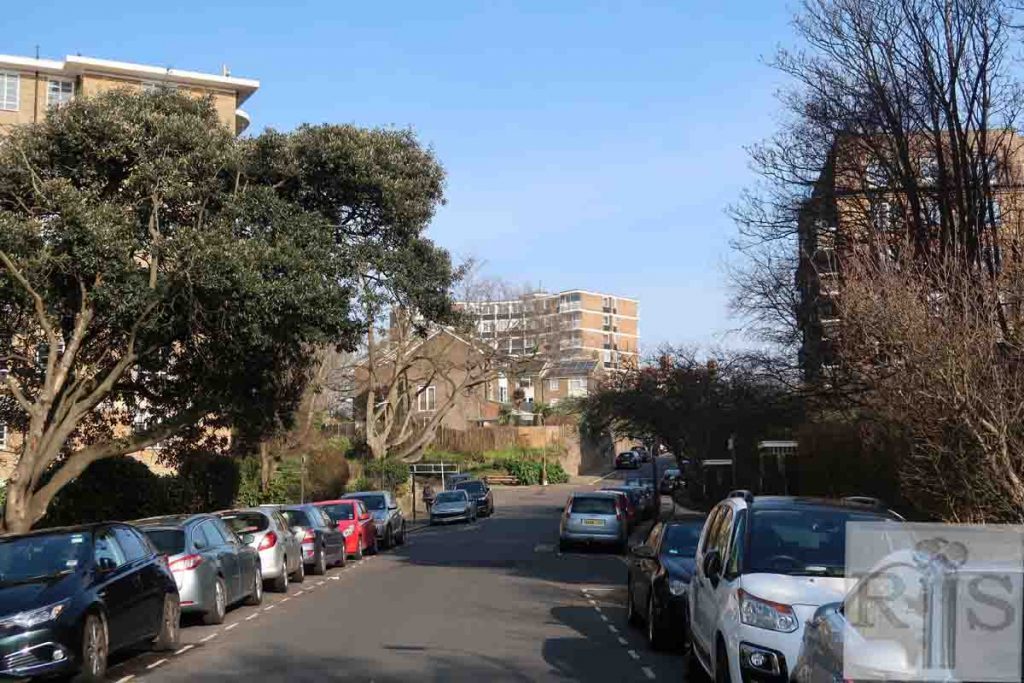James Gray: Three photographs of 22 March 1970, showing the old Bowls Pavilion and the neighbouring changing room for tennis players. These adjoined the Bowling Green and the Tennis Courts. They had been here for many years and in 1972 the decision was taken by Hove Council to replace them by more up to date buildings. Demolished in October 1972. jgc_11_ 085, jgc_11_086 and jgc_11_087
James Gray: When this photograph was taken, probably between 1890 and 1900, the gardens were in private ownership, though the public could pay for admittance. The two walls provide the only clues as to the site of these swings, because the area has changed out of all recognition, during the passage of about 70 years. The old flint wall now encloses the pond, while the brick wall beyond is the west wall of Grasshopper Cottage. Mr Bolton, retired Parks Superintendent, who was living in the cottage in 1960 remembered having the nails pulled from the trees when the Corporation took over the gardens in 1908. The view is looking north to where Nizells Avenue is now, with the Bowling Green on the left. jgc_11_075
James Gray: Two photographs of this ancient cottage shortly before it was demolished. Of uncertain age, it was much more than 100 years old and may even have been the contemporary with Wick House, late 18th century. Probably originally used for workers on the Wick Farm, after acquisition by the Corporation it became the Park Superintendent’s house and was still inhabited as lately as 1960. Its final use was as a gardener’s store and as it was not worth restoring or preserving it was removed in late 1967. Date of photographs 30 April 1967. jgc_11_083
2018: Grasshopper Cottage was demolished in 1967 and replaced by St Ann’s Well Bowling Club house. This was closed and boarded up in 2017 and has now reopened as the Little Forest Nursery. (Photographer: Hugh Robinson)
James Gray: The Hermit’s Cave, about 1920, I do not recall seeing this, so I do not know where it stood or when it was removed. jgc_11_081
2018: The plaque shows the location of the Hermit’s Cave. In the background can be seen properties on Furze Hill – the gable end of the Pines Nursing Home, the block of flats called Furze Hill House, and the Furzedene townhouses. (Photographer: Hugh Robinson)
James Gray: View of the gardens and the Well House. The period is unknown but it may well have been 1890 to 1900. jgc_11_076
2019: The Well House was demolished in 1935 and was replaced by the present mock wellhead which is just visible in the centre of the picture. (Photographer: Helen Glass)
James Gray: These gardens were originally part of Wick farm, owned during the 18th Century by the Scutt family. The present Farm Road led to it, hence its name. Wick House, built as the farmhouse, dated from about 1780. Later Sir Isaac Goldsmid who converted the farmhouse into a mansion and laid out the ornamental grounds, acquired the estate.
James Gray: Two photographs (jgc_11_083 and 084) of this ancient cottage shortly before it was demolished. Of uncertain age, it was much more than 100 years old and may even have been the contemporary with Wick House, late 18th century.
James Gray: The ancient lodge-cottage of St Ann’s Well Gardens, 7 October 1962. It was removed in 1963. It was certainly one of the oldest houses in Hove. At one time the lodge of Wick House, it was probably built at the same time, the late 18th century. Wick House was demolished in the 1930s to make way for Furze Croft flats. jgc_11_088
2019: The site is now occupied by the end house of Furzedene, a terrace of 10 houses in a cul-de-sac off Furze Hill. See also jgc_11_079 and 095, both on the Furze Hill page. (Photographer: Helen Glass)
James Gray: Two photographs (jgc_11_106 and jgc_11_107) of buildings which once formed part of this laundry, though when they were taken on 10 February 1974, the buildings were listed as in Osmond Road, at the corner of Nizells Avenue, see photo. Wick laundry started as a commercial undertaking in the 1900s, but one wonders whether its origin was as a laundry of the Wick Estate, which included what is now St Anns Well Gardens. Support for this is provided by the firm’s advertisement in the Brighton Directory. The buildings were removed in 1989, and the inevitable flats have replaced them. This photograph shows the frontage in Nizells Avenue. This view shows the rear of the building, from within the St Anns Well Gardens. jgc_11_107
2018: This is the view of the rear taken from St Ann’s Well Gardens. See also jgc_11_106 on the Nizells Avenue page. (Photographer: Dave Lane)
James Gray: St Ann’s Well Gardens. The top one shows the bandstand where military bands entertained large crowds at the weekends in the summer months, and the boys and girls walked hand-in-hand listening to the music. What simple pleasures we enjoyed in those days. Photographed in 1930. jgc_11_080
2019: The now demolished bandstand stood where the tree in the centre of the 2018 photograph now stands, to the east of the present cafe which isn’t shown. The houses in the background are in Nizells Avenue. (Photographer: Helen Glass)
James Gray: An inter-war view of the British Legion Band most likely in St Ann’s Well Gardens, judging by the reference to ‘Dancing on the Green’ which lay in front of the bandstand. jgc_15_121
James Gray: Furze Hill, the approach to St Ann’s Well Gardens in 1910. The rural character of this road remained unchanged until the 1930s when the flint walls were removed and the road widened, with the building of Wick Hall and Furze Croft Flats. jgc_11_079
2019: The Furze Hill lodge was demolished in 1963 and the site is now at the western edge of the Furzedene terrace. Furze Croft is visible on the left, Furze Hill House in the centre and Wick Hall on the right. See also jgc_11_088 and 095. (Photographer: Helen Glass)
